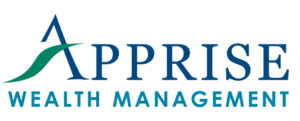It’s rare that any of us work for the same employer for our entire careers. When you took advantage of your employer’s retirement plan, you have choices. One option is to complete a 401k rollover. But most of us don’t know what to do. Uncertainty causes many of us to take the easy way out. We leave the funds where they are. The choice reminds me of an old song by The Clash.
But what should we do? Since they’re often unsure, clients and prospects who have switched jobs at any time in the past often ask, “Should I complete a 401k rollover?” You usually have three choices as to what you can do with your money:
- Leave the funds in your old company’s 401(k) plan.
- Transfer the funds to your new company’s 401(k) plan.
- Roll the funds over to an Individual Retirement Account (IRA).
If you follow the right steps, the transfer of funds to another account can qualify as a tax-free 401k rollover. If you don’t know what you need to do, please schedule a call. I can walk you through the key steps.
There are many things to consider when deciding what to do with your 401(k). It’s not always an easy decision. The following represent some of the key factors to keep in mind when deciding what to do:
- Costs or Fees
- Investment Choices
- Administrative Factors
- Complexity
- Your Age
- Special Tax Benefits
- Withdrawal Rules
While this week’s blog reviews issues related to 401k rollovers, they are not meant to discourage you from contributing to a 401(k) in the first place. In fact, we recommend that you Pay Yourself First! That’s a great way to fund your 401(k).
I’ll talk about the above factors in more detail in the rest of today’s blog. If you’d like some help deciding whether to complete a 401k rollover, please schedule a call.
Please note: 401(k) and 403(b) accounts can also be referred to as defined contribution plans.
Costs or Fees
There are a few costs to consider when reviewing your current 401(k). Most 401(k)’s allow you to choose from a handful of mutual fund investments. Each of these funds has an underlying expense ratio. That’s how the company that manages the fund gets paid for its services.
The company that administers your company’s 401(k) also wants to get paid. Your company can pay some or all of these fees. The fees can be charged in different ways. For example, a fund’s expense ratio can be increased. There could also be an administrative fee. My wife started a new job a couple of weeks ago. She texted me earlier today complaining about the annual fee charged by her new company’s plan. Unfortunately, there’s not much we can do about it. Because there’s a company match, it would be foolhardy not to participate.
If you decide to manage your rollover 401(k), you can almost always lower costs. You can invest in low-cost exchange-traded funds or mutual funds. If you’re so inclined, you could hold individual stocks, too.
If you have a financial advisor, you can let them manage the plan for you. Cost represents an important consideration when deciding whether you should complete a 401k rollover.
401k Rollovers Can Provide More Investment Choices
The typical 401(k) plan limits you to 10-15 investment choices. Some plans offer even fewer choices. That can make it harder to diversify your account. For example, many of my clients work for the government. This plan’s biggest advantage is its cost structure. The expense ratios are very low. But the government’s 401(k) – called the TSP or Thrift Savings Plan – offers a very limited number of investment choices. It doesn’t cover all areas of the market geographically.
Many fee-only advisors – including Apprise – don’t charge you to provide allocation guidance for your 401(k). Since most include a limited number of investment options, an advisor can only recommend an allocation based on those choices.
In this low-interest rate environment, some 401(k) plans provide another advantage. They may offer a stable value fund at a relatively high-interest rate. If you want to take advantage of that, you can also see if your company plan offers partial 401k rollovers. Many do not. But if they do, you could keep some assets in your old 401(k) as part of your fixed-income allocation.
If you have other tax-deferred retirement accounts and the balances warrant it, you could also use those accounts to diversify outside your stable value fund. The 401(k) balance might only be allocated to that fund in this instance.
If you complete a 401k rollover, you will have many more investments to choose from. That can make diversification a lot easier.
Administrative Factors Associated with 401k Rollovers
401(k) plans can restrict how and when you can access your money. We have seen or heard of the following five restrictions:
- On occasion, your plan may change investment providers. That can lead to a blackout period. During that time, you cannot access your funds.
- When you start withdrawing funds from your 401(k), you have to pay taxes on distributions. Most 401(k) plans allow you to withhold both federal and state taxes from your distributions. But some plans cannot accommodate state-level withholdings. With an IRA you can withhold both federal and state taxes from your distributions.
- Some 401(k) plans restrict how often you can withdraw funds. With IRAs, you can schedule monthly or even bi-weekly withdrawals. In essence, you can replicate the regular paycheck you received when you were working. You schedule transfers from your IRA to your checking account via direct deposit as frequently as you need.
- Some 401(k) plans also have special rules that apply to withdrawals. For example, pro-rata withdrawals may be necessary. In other words, they require you to withdraw funds proportionately from each underlying investment. You might not want to do this. For example, if the equity market falls, you may want to withdraw from other assets instead. Or you may want to adjust your asset allocation through withdrawals. If the 401(k) requires pro-rata distributions, you will have to complete additional transactions to rebalance.
- If someone inherits your 401(k) the plan may require that they withdraw the funds faster than would apply if they inherited an IRA. IRAs allow a non-spouse beneficiary to stretch out withdrawals. This can reduce the tax consequences of any withdrawals. Not all 401(k) plans allow this. Note that your beneficiary could also consider a 401k rollover into an IRA after your passing as well.
You Can Reduce Complexity with 401k Rollovers
Many of us want to streamline our accounts. Doing so makes life much easier. Fewer accounts equal fewer statements. It leaves us with less to keep track of as well. Having multiple 401(k) accounts also complicates your distributions. If you have 401(k)’s with multiple employers, you must take a required minimum distribution from each. This rule only applies to 401(k)s. If you have multiple IRAs, you can take the distribution for all of them from one account.
When you have accounts in many places, you will need to update each account if you move, change beneficiaries, or change banks. Each 401(k) account you have leaves you with one more item that you need to keep track of.
One benefit that comes with 401(k)s relates to creditor protection. Most states offer creditor protection for a portion of IRAs. But assets inside employer plans generally have a higher level of protection. If you’re a retiree with business ventures or other outside interests that put you at risk for litigation, you may want to put more weight on this factor. Completing 401k rollover(s) can reduce the complexity associated with your retirement accounts.
Your Age
If you leave your employer during or after the year you turn 55 but before you reach age 59 ½ (50 for public safety workers), you qualify for a special rule. You can take distributions without incurring the 10% early withdrawal penalty tax that normally applies to distributions taken before age 59 ½.
Unfortunately, once you roll over funds to an IRA, this special rule no longer applies. If you qualify for this “early rule” and think you will need access to your funds, you may want to leave some of your funds in your 401(k) plan until you reach age 59 ½.
Special Tax Benefits 401k Rollovers Can Provide
Some tax-advantaged rules apply to tax-deferred investments. When applying these rules, the type of account you have also matters. You should keep these rules in mind as they can apply differently to IRAs and 401(k)s.
RMDs
When you reach age 72, required minimum distributions (RMDs) start. If you have an IRA and a defined contribution plan – or defined contribution plans – you must take an RMD from each. If you have multiple IRAs, you can aggregate your RMD amounts for all your IRAs and withdraw the total from one IRA or a portion from each of your IRAs. (This IRS table compares RMD rules for IRAs and defined contribution plans such as 401(k)s and 403(b)s. You can consolidate your defined contribution plans with your IRAs. This can ease the administrative requirements as you enter you reach age 72 and beyond.
QCDs
If you are charitably inclined, you should consider making qualified charitable contributions (QCDs). QCDs are allowed from IRAs. Your RMD is normally considered taxable income on your tax return. The QCD rules allow you to exclude any amount of your RMD that goes directly to a qualified charity from taxable income. QCDs can represent the most tax-efficient way to donate. While you don’t get a deduction for the QCD amount, not including the amount in income in the first place, provides a greater tax benefit. But you can’t make a QCD from a defined contribution plan. This benefit only applies to RMDs from IRAs.
NUA
Does your 401(k) statement include an Employer Stock Ownership Plan (ESOP)? If so, you can potentially utilize a unique distribution option referred to as Net Unrealized Appreciation (NUA). These rules make a portion of your distribution eligible for preferential tax treatment if you distribute the stock from the plan to a brokerage account. Rolling the stock over to an IRA would void this option. You will need to evaluate if an NUA distribution makes sense for you. If it does, to qualify for preferential tax treatment, you must distribute the stock and roll over the remainder of the balance to an IRA following certain steps. Importantly, if you took a previous distribution from the 401(k), you may have inadvertently voided your ability to take advantage of the NUA rules.
Withdrawal Rules
If you want to buy your first home, the IRA rules exempt $10,000 of withdrawals from the 10% early withdrawal penalty that applies to investors younger than 59 ½. 401(k)s and other company retirement plans offer no such exemption for homeownership. Remember that you must still pay income tax on this withdrawal. But it will cost you an extra $1,000 ($10,000 * 10%) if you withdraw the funds from a 401(k) rather than an IRA.
This can be a meaningful difference.
CLOSING THOUGHTS
When deciding whether to roll over a defined contribution plan, many discussions center on cost and investment choices. There are numerous other factors to consider as well. These can include tax considerations, administrative factors, complexity, and age.
While the above discussion does not address all of these factors, it does go into more depth than the typical analysis.
If you are interested in objective planning that can help you evaluate the pros and cons of important decisions such as whether to roll over a defined contribution plan, please schedule a call.
I’ll be back next week with “Apprise’s Five Favorite Reads of the Week.”
Our practice continues to benefit from referrals from our clients and friends. Thank you for your trust and confidence.
We hope you find the above post valuable. If you would like to talk to us about financial topics including your investments, creating a financial plan, saving for college, or saving for retirement, please complete our contact form. We will be in touch. You can also schedule a call or a virtual meeting via Zoom.
Follow us: Twitter Facebook LinkedIn
Please note. We post information about articles we think can help you make better money-related decisions on LinkedIn, Facebook, and Twitter.
For firm disclosures, see here: https://apprisewealth.com/disclosures/




